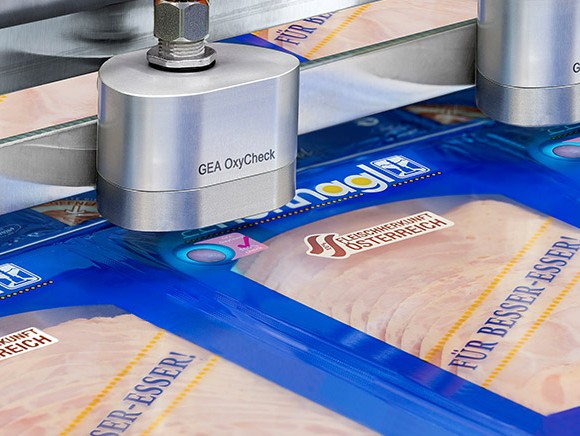
Easier to operate, flexible, modular design, energy-saving, eco-friendly and more efficient – ever-greater demands are being placed on food manufacturing machines and processes, according to machine builders and suppliers.
The current machine-design and machine-building trends are closely linked to consumer wants and needs; think of the focus on health and food safety, the need for convenience and the rising number of one- and two-person households. Stefan van Hoof, Manager Sales Food Processing & Packaging at GEA, has reached the same conclusion: “At Interpack we’re launching OxyCheck, an innovation in modified atmosphere packaging that improves food safety. The residual oxygen value in packaging is normally checked manually, but this is a new automatic and inline system that checks the oxygen content by measuring the change in the wavelength of light as it passes through the packaging film.” This requires a specific type of film which is a little more expensive, but manufacturers reduce labour costs and spoilage in return.
Stefan van Hoof: ‘Manufacturers are looking for short changeover times and fast, automated cleaning’
“Broader and more varied product ranges entail more production changeovers,” continues Van Hoof. “But that may not affect availability, so manufacturers are looking for short changeover times and fast, automated cleaning to guarantee the output and minimise the rise in labour costs. Customers are also increasingly opting for robotisation. One of our customers had a production line where operatives separated meat cuts by hand and placed them on the conveyor. Thanks to a new machine the cuts are now dropped onto the line in bulk but still end up neatly separated on the conveyor, saving labour costs on the spot.” The chain-wide importance of food safety and efficiency is increasing the demands placed on traceability and hence on automation and sensors. Production planning departments are becoming paperless as central planning and automated production lines increasingly dictate the activities. In effect, the line now tells the operative what to do instead of the other way round. Van Hoof has high expectations of the combination of sensor technology and the internet which facilitates new ways of collaborating on machine maintenance. “We can monitor the condition of the machine remotely and dispatch an engineer at precisely the right time. In other words, if we take care of the maintenance there can be better agreements on uptime, and this trend is set to continue.” His company is also taking steps to ease the burden on customers or take on some of the risks in terms of financing.
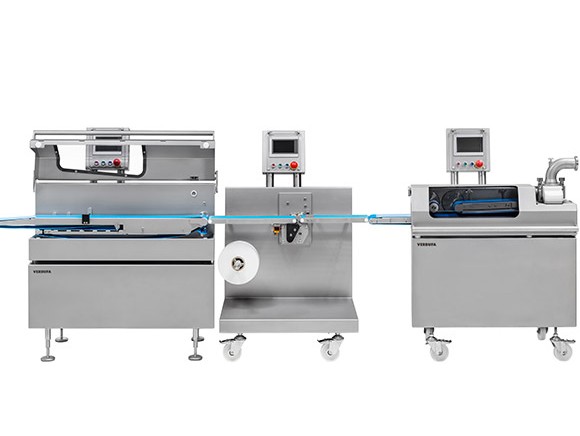
Mark Marrink, Managing Director, and Marc Fortuin, Quality Manager, both at Verbufa in Amersfoort, are also noticing a greater need for flexibility. Among other things, Verbufa supplies depositors for multi-lane filling in packaging machines, drip-free dosing lines for the spreadables industry, and forming and slicing machines. Customers often request modular machines that continuously enable them to add new applications to their line, from product forming up to and including filling. Fortuin: “You can keep adding to our machines in phases. Nowadays, a machine has to be able to produce as many different products as possible. One innovation that responds to that need is the development of interchangeable dosing heads which mean that a dosing machine can be used to make multiple different products.” Marrink adds: “The most significant trend in our industry is the shift towards ‘to go’ – convenience. Unlike in the past, consumers no longer know what they’re going to eat every day for the next week. Instead, they decide and make meal choices on the spot. The retail and manufacturing sectors are changing – we’re seeing new kinds of shops and manufacturers. There are a lot more smaller and innovative companies, for example, selling authentic high-quality products. They develop appealing new products based on craftsmanship and tradition, and we work with those companies to figure out how to mass-produce them. We guide the transition to stainless steel.”
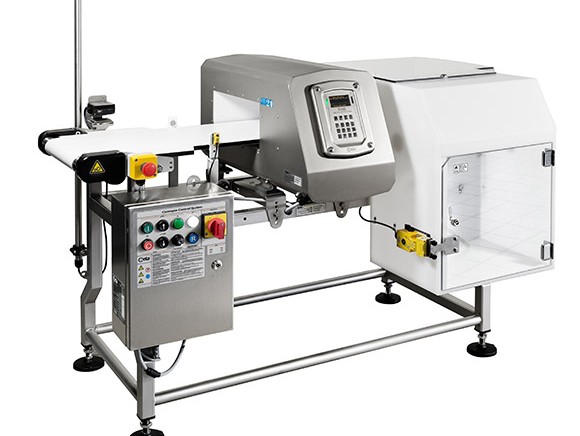
Tim Keizer, Sales Engineer for specialised CEIA metal detectors at machine builder Heat and Control, also sees health as an important trend: “When a manufacturer replaces his existing equipment, he wants better and smarter solutions than his current systems. His aim is to produce a better end product – one that will help to set him apart.” According to Keizer, one notable food processing innovation is the growing use of pulsed electric fields (PEFs), such as for potato products. “Just some of the advantages of PEF include a lower acrylamide content and lower fat content in the end product. Potato crisps produced using this method are healthier and crunchier, plus they have a better flavour and texture.” Another area attracting attention is heat recovery: the capture and reuse of surplus heat. In terms of metal detection, Keizer sees a new trend towards performing quality controls on the packaged end product. Food processing companies’ customers have been increasingly critical for some time; retailers demand that manufacturers have everything under control. So how come things still go wrong sometimes? Keizer puts it down to human error and outsourcing the production activities to partners who are less well-equipped. “You have to keep a close eye on the day-to-day operation when setting up a process. Take care not to ask too much of the operative, for example. Otherwise, that increases the risk of mistakes.”
Tim Keizer: ‘Manufacturers want better and smarter’
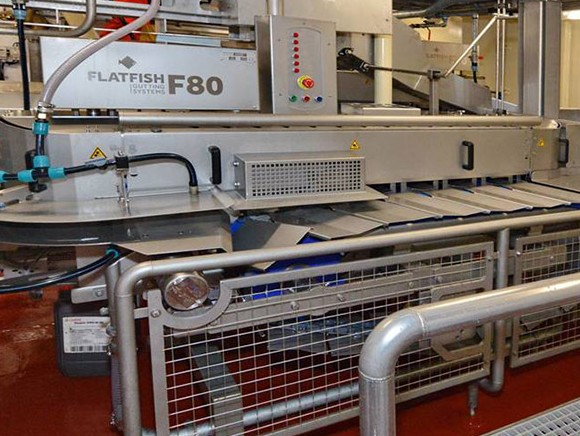
Jannes Jansen, Managing Director and owner of Jansen Techniek in Putten, is focused on finding practical solutions, as he illustrates with a couple of examples: “Nowadays, we get a lot of questions about ways of monitoring the process remotely. An app enables manufacturers to allow their customers to see the real-time status, such as that the detection system is working perfectly.” The foodservice and catering sector is one with low margins so it is essential to keep costs down, which is why there is substantial interest in reliable portioning systems. “That’s a clear trend. Restaurants sell steaks and salmon fillets per portion so chefs want to know exactly how many portions 10kg will give them, for example. Many suppliers still slice manually, so that number of portions can vary significantly. If you only get 48 portions instead of 50 from a 10kg joint, you lose out on the price of two extra meals.” He has developed a new machine so that fishermen can process plaice on board their boats. “The plaice are typically cleaned by hand on board and sorted later when the boat docks. An experienced fisherman can strip 10 to 15 fish per minute. Our plaice stripping machine enables two fishermen to strip, weigh and sort 80 plaice a minute. It had to be a very reliable machine because you can’t dispatch an engineer when the boat is at sea. The machine also includes a special swell-compensated weighing mechanism.” The development of the machine involved a substantial investment, he explains: “But as an entrepreneur you have to be prepared to take risks.” The machine is already in use on several fishing boats.
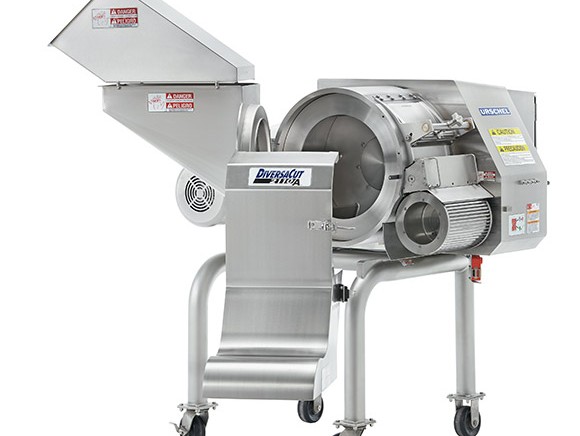
In the Dutch town of Wijk bij Duurstede, Jan van der Horst heads up the local subsidiary of Urschel, an American manufacturer of slicing equipment. He has noticed that raw material recovery is becoming increasingly important. “Nothing may go to waste in the process. All the raw materials that are used in the process must also end up in the packaged product.” The large frozen-vegetable processing companies, many of which are based in Belgium, are no exception. Besides that, they also need machines that can handle bigger volumes per hour to further reduce their cost per tonne. He mentions a striking example of economical reuse of raw materials in the bakery industry: residual products from biscuit manufacturing are used for high-end applications such as the granulated pieces in the Oreo Cookie McFlurry. Urschel is active in every fresh-food category and builds machines for use in the processing of all kinds of fresh food products. “Hygiene is receiving more and more attention in each category and we’re continuously working on improvements. For instance, the slicing action is increasingly separated from the drive mechanism, and the motors are made from stainless steel.” Product safety and reliability are subject to ever-greater demands.
The branded-food manufacturers are continually looking for ways to innovate, and the machine builders are tasked with turning their innovative ideas into reality. Van der Horst: “We’re seeing plenty of new developments. For example, there is high demand in the potato crisp market for new shapes and sizes, such diamond-shaped waffle crisps – so new opportunities are emerging all the time.”
Source: © GEA, Verbufa, Heat and Control, Jansen Techniek Putten en Urschel